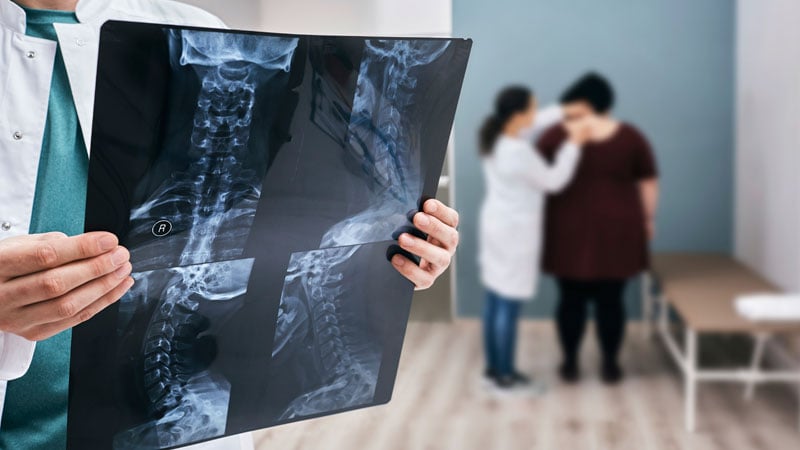The study covered in this summary was published on medRxiv.org as a preprint and has not yet been peer reviewed.
Key Takeaways
-
Spinal curvature in patients with scoliosis appears to adversely affect diastolic myocardial strain, apparently as a result of deformity of the thoracic cage.
-
The condition is associated with a 45% increased lifetime risk for major adverse cardiac events (MACE), the effect driven by heart failure and atrial fibrillation.
-
The study may be the first to identify an increased lifetime risk of MACE in people with scoliosis.
Why This Matters
-
Follow-up cardiac evaluations in patients identified with scoliosis may potentially help identify opportunities for early intervention.
-
Early surgical intervention may potentially lower the risk of future MACE, but that would require validation in further studies.
Study Design
-
Hospital data from 502,324 members of the UK Biobank adult population cohort from 2006-2010, aged 40-69, were analyzed to identify those with scoliosis.
-
Cardiac structure and function and clinical events were followed based on phenotypic and imaging data.
-
Cardiac magnetic resonance (CMR) imaging provided phenotypic data on left ventricular (LV) ejection fraction, LV end-systolic volume, LV end-diastolic volume, and measures of radial, longitudinal strain, and circumferential myocardial strain at diastole.
-
Findings from CMR imaging were analyzed alongside data from 3D surface-to-surface (S2S) imaging of spinal deformities.
-
All CMR and S2S analyses were adjusted for age at imaging, sex, race and ancestry, systolic blood pressure, and body surface area.
Key Results
-
Scoliosis of any etiology was identified in 4095 participants (0.8%), for a prevalence of about 1 in 120.
-
Participants with scoliosis were significantly older and more likely female compared with the total UK Biobank cohort. They were also significantly more likely to have dyslipidemia, hypertension, heart failure, and valve disease.
-
The hazard ratio for lifetime risk for MACE among those with scoliosis to other participants was 1.45 (P < .001).
-
The hazard appeared to be driven by increased risks for heart failure (HR, 1.58, P < .001) and atrial fibrillation (HR, 1.54, P < .001).
-
Participants with scoliosis, compared to those without, showed increased radial and decreased longitudinal peak diastolic myocardial strain.
-
Analysis of participants with scoliosis by S2S imaging revealed cardiac compression at the top, bottom, and sides of the heart.
Limitations
-
Participants in the UK Biobank cohort were of a limited age range (40-69 years). Most were of European ancestry.
-
Selection bias for inclusion in the subcohort with available CMR results may have excluded some participants with more severe scoliosis.
-
The scoliosis etiology was “unspecified” in most cases.
Disclosures
-
This study was supported by the Wellcome Trust, Medical Research Council (UK), British Heart Foundation, and the NIHR Imperial College Biomedical Research Centre.
-
One author has consulted for MyoKardia, Foresite Labs, and Pfizer and another for Bayer.
This is a summary of a preprint research study, “ Identification of an increased lifetime risk of major adverse cardiovascular events in UK Biobank participants with scoliosis ,” written by Valentina Q. Santofimio from the National Heart and Lung Institute, Imperial College London, UK and colleagues on medRxiv.org, provided to you by Medscape. This study has not yet been peer reviewed. The full text of the study can be found on medRxiv.org.
Source: Read Full Article
